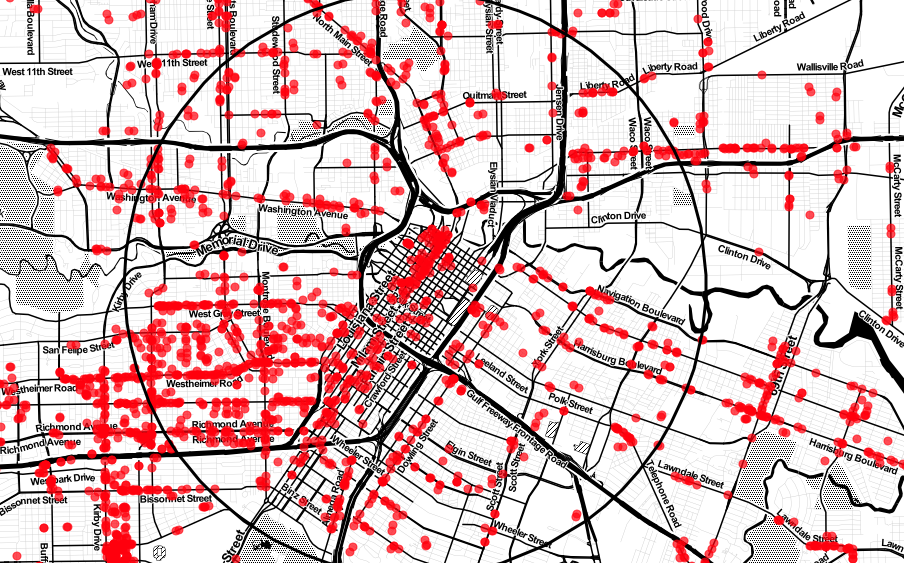830. That's the number of kids living in Anacostia, a neighborhood in southeast Washington. D.C. that would have to share a single, age-appropriate book, based on the ratio of children's books for sale in the area to children living there.
The figure comes from a study of the availability of children's books for sale in low-income and borderline neighborhoods across the country.
The report -- from New York University's Steinhardt School of Culture, Education, and Human Development -- found stark disparities in access to children's books between poor and borderline neighborhoods, creating what the researchers call "book deserts," akin to food deserts.
So while there's one book for sale for every 830 kids living in Anacostia, which has a 61 percent childhood poverty rate, there's a book for every two kids in the nearby Capitol Hill neighborhood, which has a 21 percent childhood poverty rate.
The findings of the study, which compared pairs of contiguous neighborhoods in Washington D.C., Detroit and Los Angeles, are significant. While online shopping grows, most children's books are still purchased in brick-and-mortar stores, according to the report. Education experts have a growing understanding of the critical role reading plays in early childhood education. But poor neighborhoods are left to fight the so-called "summer slump" with fewer resources than wealthy ones, which may impact a student's academic performance.
"During the precious summer months, with schools closed and pre- school programs often converted to day camps or shut down for the vacation," reads the report, "the likelihood that one could find a book for purchase in these neighborhoods is very slim."
Overall, the report found that "borderline and middle-income neighborhoods had 16 times as many books per children than our lower income neighborhoods." The study defined borderline neighborhoods as those that had between 20 percent and 40 percent childhood poverty rate. And while the study compared low-income and borderline neighborhoods, the disparities grow even starker when looking at wealthy areas, where children have access to around 300 books per child.
In Hamtramck, a community in Detroit, 67 percent of kids live in poverty. There, 37 kids under the age of five would have to share an age-appropriate book, compared to five kids living in the University District neighborhood, where 32 percent of children are living in poverty.
In Los Angeles' Vermont Square neighborhood, which has a childhood poverty rate of 54 percent, 12 young kids would have to share a book. In Culver City, where 18 percent of children living in poverty, where there are actually more kids' books for sale than children under five.
And the problem could get worse. The study details the increasing isolation of poor households in pockets of concentrated poverty across the country. "These high-poverty neighborhoods continue to be disproportionately composed of members from minority groups, reflecting the continuation of racial and ethnic segregation," according to the report.
Because the study looked at all the places where printed materials are sold -- not just bookstores but dollar stores, thrift stores, grocery stores and other locations -- it also reveals broader retail inequities. Here in Houston, storefronts tend to be more plentiful on the west side of town, according to an analysis of data by City Observatory.
Anecdotally, the data seem likely to hold up in Houston. A quick Google search for bookstores shows most are located on the west side of town. So while the Greater Third Ward zip code is home to 1,495 children under the age of five, book stores are mostly limited to a couple of college campus and church bookstores. That's compared to the nearby zip code that includes Rice Village and West University Place and is home to 1,664 kids under the age of five live. The area hosts well-known stores including Brazos Bookstore as well as a Half Price Books location.
There are efforts to get books into underserved areas, including the Houston Independent School District's Bookmobile that launched in 2015 and visits a handful of parks and community centers. And the district also partners with Houston's public libraries for summer reading programs.
But, the NYU study notes, "Although libraries are critically important, studies have shown that the very presence of books in children’s homes is related to reading achievement."
Book deserts, concludes the report, like food deserts, "have significant consequences for the well-being of families."



